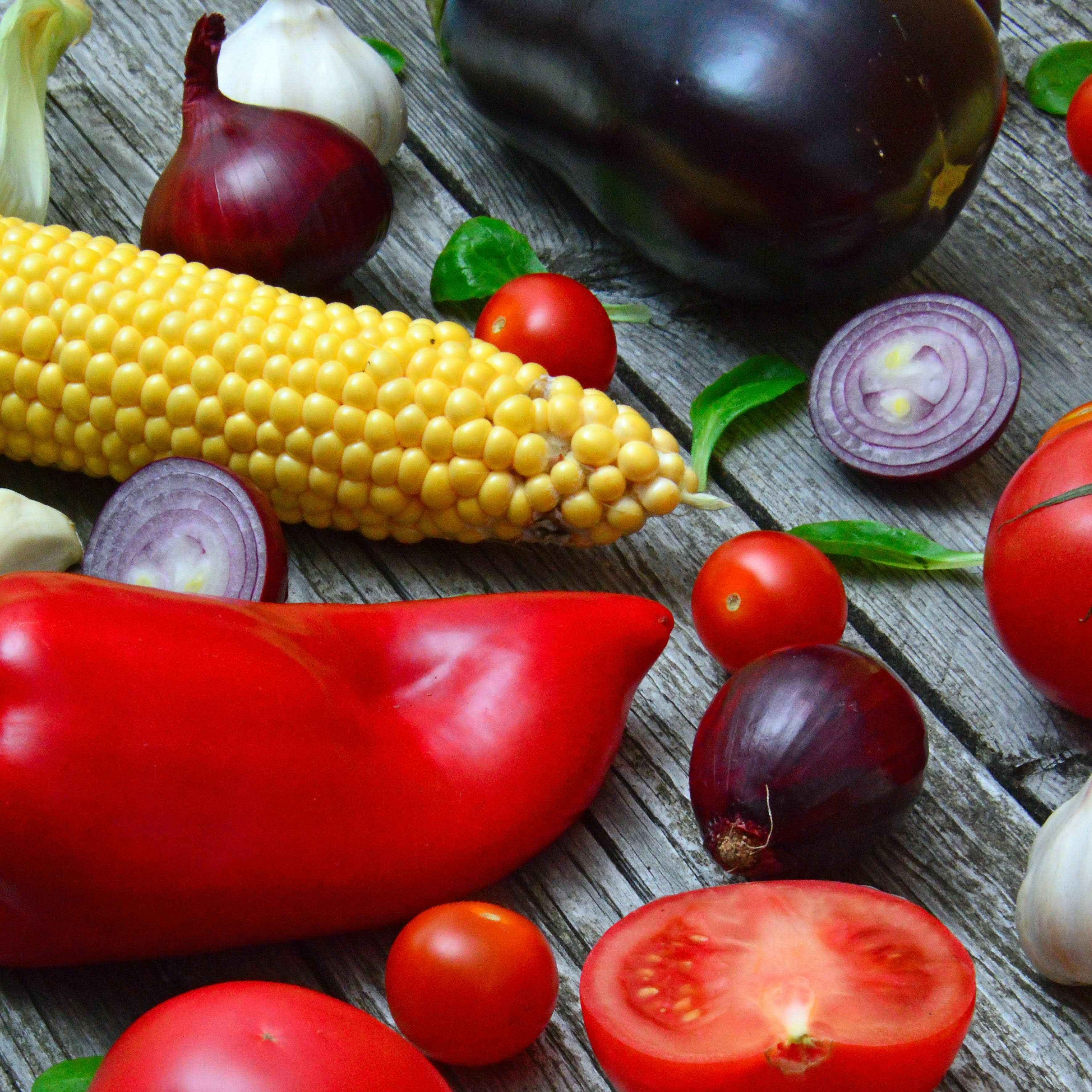Is Bioengineered Food Bad for You?
Is Bioengineered Food Bad for You?
Ever stood in the grocery store, pondering over labels that scream "non-GMO" or "bioengineered" and wondered what it all really means for your health? In a world where technology and traditional farming blend to create the food on our plates, understanding the impact of genetically modified organisms (GMOs) is more crucial than ever.
So, let’s peel back the layers and discover how GMOs fit into a health-conscious lifestyle.

What Are GMOs and Bioengineered Foods?
At the heart of modern food science lie GMOs and bioengineered foods—terms that spark both innovation and controversy. These are foods crafted not just in the fields but in the labs, where scientists tweak genetic material to enhance traits like pest resistance and nutritional value.
From soybeans resistant to herbicides to papayas braving viral storms, GMOs are a testament to human ingenuity. Yet, as we navigate this biotech industry, questions about food safety, health effects, and environmental impact arise.
Why Are Foods Genetically Modified?
At its core, the modification of food aims to address several global challenges, enhancing crops' resilience and nutritional profile to better serve humanity's needs.
Here’s a closer look at the compelling reasons behind genetic modifications in our food supply:
- Battle Against Crop Losses: By infusing crops with resistance to pests, diseases, and adverse weather conditions, GM technology significantly reduces the vulnerability of crops to environmental threats, ensuring a stable, reliable food supply.
- Increase in Agricultural Productivity: Genetic modifications are engineered to boost crop yields, efficiently use available agricultural land, and help feed a growing global population.
- Nutritional Enhancements: In regions plagued by nutritional deficiencies, bioengineered crops like Golden Rice, enriched with Vitamin A, offer a beacon of hope, potentially reducing the prevalence of malnutrition and associated health conditions.
- Environmental Sustainability: GM crops requiring fewer chemical inputs (such as pesticides and herbicides) contribute to a reduced environmental footprint. Traits like nitrogen efficiency and drought tolerance promote more sustainable farming practices, preserving biodiversity and water resources.
- Economic Benefits for Farmers: Higher crop yields and reduced losses translate into economic stability for farmers, especially crucial for smallholders in developing countries. Growing more food on less land can alleviate poverty and bolster local economies.
- Reduced Use of Chemicals: With built-in pest resistance, GM crops can diminish the need for synthetic pesticides, leading to healthier soils and less chemical runoff into rivers and oceans.
Digging into these reasons shows that genetic modification isn't just about ramping up food production. It's also a key player in making agriculture more sustainable worldwide and keeping us healthier.
Are Bioengineered Foods Safe for Human Consumption?
Here’s the scoop on the safety of genetically modified foods:
Rigorous Testing
Before GM foods can make their debut in the grocery aisles, they undergo extensive safety evaluations. Scientists examine their potential to cause allergic reactions, toxicity levels, and effects on nutritional content. These foods must meet the same safety standards as traditional foods.
Global Consensus
Leading health and scientific organizations worldwide, including the World Health Organization (WHO) and the Food and Agriculture Organization (FAO), have stated that GM foods currently available on the international market have passed safety assessments and are not likely to present risks for human health.
Regulatory Oversight
In countries where GM foods are approved, regulatory bodies such as the U.S. Food and Drug Administration (FDA), the European Food Safety Authority (EFSA), and others ensure that any food, genetically modified or not, is safe for consumers. These agencies review the data from safety tests and monitor the market for any signs of issues.
Long-Term Studies
Ongoing research aims to understand the long-term health effects of consuming GM foods. While most studies have not identified significant health risks associated with GM food consumption, scientists continue to study and monitor as bioengineering technology and its applications evolve.
Nutritional Equivalence
Studies comparing GM foods to their non-GM counterparts generally find no significant nutritional differences. In some cases, genetic modification aims to enhance the nutritional profile, such as increasing vitamin or mineral content, making them a potentially beneficial addition to diets.
Which Foods Have Been Genetically Modified?








So, Why Choose Non-GMO?
Seeking Simplicity
For those yearning for foods that feel closer to what nature intended, non-GMO options offer a sense of purity and simplicity. It’s about getting back to the roots, quite literally, and enjoying foods that haven't been altered in a lab.
Environmental Considerations
The conversation around GMOs isn’t just about what we eat but how it affects the planet. Some choose non-GMO because they're concerned about the long-term environmental impacts of genetically modified crops, such as biodiversity loss or the potential for GMOs to crossbreed with wild plants.
Health Concerns
While the consensus among scientific communities is that GMOs are safe, some individuals prefer the precautionary principle. They opt for non-GMO foods to avoid any potential, albeit unproven, long-term health risks that might emerge from consuming genetically modified foods.
Supporting Small-Scale Farmers
Choosing non-GMO often means supporting organic and small-scale farmers who rely on traditional, sustainable farming practices. It's a way to vote with your dollar for a more localized, environmentally friendly approach to agriculture.
Transparency and Labeling
People value knowing where their food comes from and how it’s produced. Non-GMO labels offer an extra layer of transparency for consumers who prioritize informed food choices in their quest for a healthy lifestyle.
How Can I Identify GMOs in My Food?
Here's how you can spot GMOs on your next grocery run, ensuring you make choices aligned with your preferences and values.
- Look for Labels: The most straightforward way to identify GMOs is through labeling. Food products containing genetically modified ingredients must disclose this information in many countries, including the United States. Keep an eye out for labels stating "bioengineered" or “contains genetically modified ingredients.”
- Check for Certifications: Products certified as "Non-GMO Project Verified" carry a seal that assures they've been tested and meet the standards for non-GMO verification. This certification is a clear indicator that the product is free from genetically modified organisms.
- Understand PLU Codes: While not a foolproof method, stickers on produce (Price Look-Up codes) can sometimes offer clues. Conventionally grown produce typically has a four-digit code, organic items have a five-digit code starting with 9, and some genetically modified items might have a five-digit code starting with 8, although this system is not widely used for GMO identification.
- Opt for Organic: By law, organic products cannot contain genetically modified organisms. Choosing organic products is an effective way to avoid GMOs in your diet, as these items adhere to strict guidelines that exclude the use of genetic engineering.
By becoming a savvy label reader and educating yourself on the nuances of food labeling and GMO crops, you can navigate the grocery store aisles with confidence. Whether you're committed to a GMO-free diet or simply curious about your food's origins, understanding how to identify GMOs empowers you to make choices that align with your dietary preferences and values.
How Can I Start a GMO-Free Diet?
Embarking on a non-GM journey isn't just about dodging what's genetically modified but embracing a lifestyle that feels good, tastes amazing, and does right by the planet. So, how do you weave this into your daily eating habits without feeling overwhelmed?
Let’s dive into some straightforward tips to help you transition smoothly and enjoyably:
Get the Lowdown on GMOs
Start with a bit of homework. Knowing which crops are commonly modified (think soy, corn, and canola) arms you with the knowledge to navigate your grocery store or farmer's market with confidence.
Go Organic When You Can
Leaning toward organic is a smart move since these goodies sidestep genetic modifications by default. Look out for that USDA Organic label—it’s your shortcut to avoiding GMOs.
Whole Foods Are Your Friends
Building your meals around unprocessed foods (yes, those colorful fruits, veggies, and grains) is a natural way to dodge GMOs and amp up your nutrient intake.
Embrace Local and Seasonal
Shopping local isn’t just trendy. It’s a way to connect with food that’s less likely to have been through the genetic wringer. Plus, it tastes fresher and supports your local economy.
Become a Meal Planning Pro
A little planning goes a long way in keeping GMOs off your plate. Drafting a meal plan helps you stay on track and resist the siren call of GMO-laden convenience foods.
Find Fun Alternatives
Miss your favorite snacks? There’s probably a non-GMO version out there waiting to become your new go-to. It’s all about exploring and experimenting.
Share the Wealth
Spreading the word and sharing your non-GMO finds with friends and family not only helps them but also strengthens your support network, making this lifestyle shift a shared adventure.
